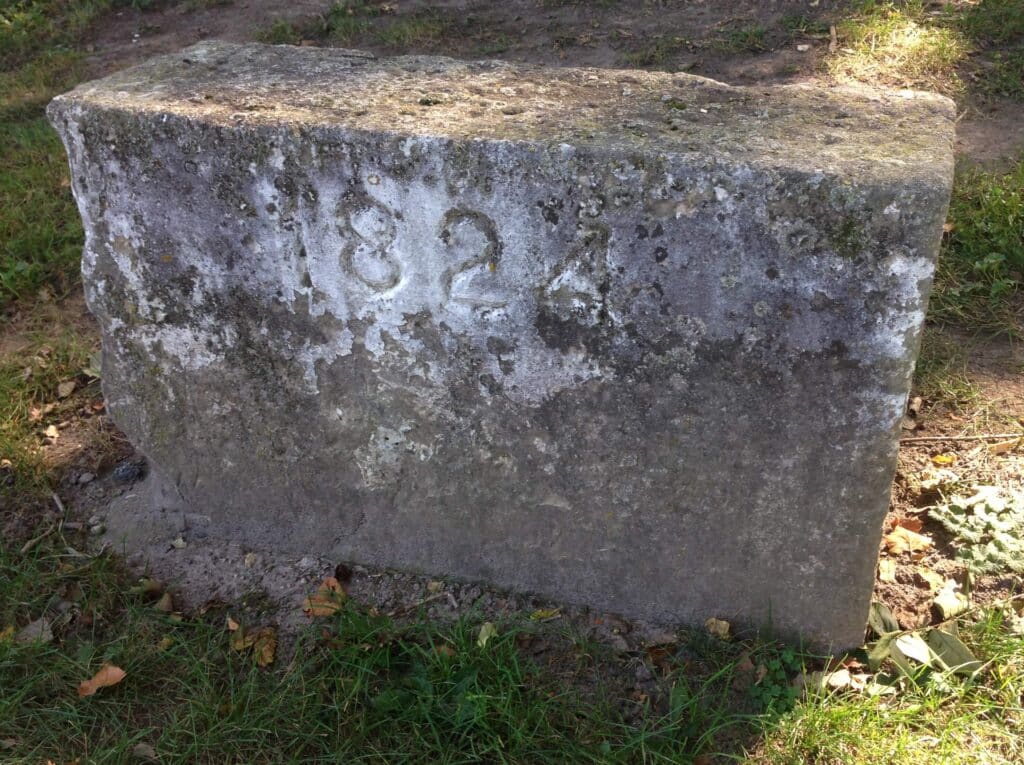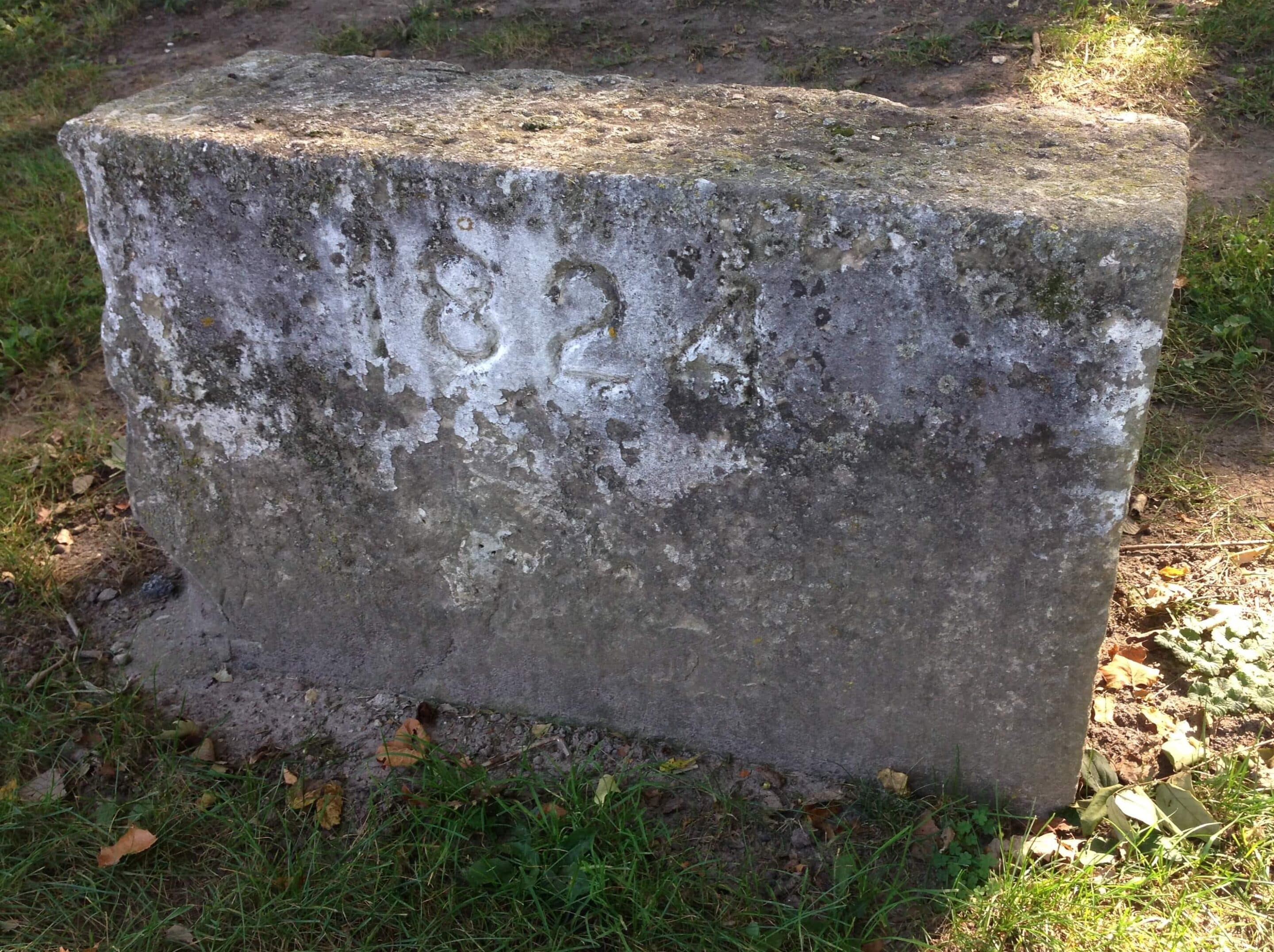 Mysteries in History
Mysteries in History
By: David Heighway, Hamilton County Historian
Snowy days are a good time to curl up in a mystery. But, while most people enjoy a good novel, historians like nothing better than to find out the real story behind some old oddity. Rather than a book, we’re happy to crank through yards of microfilmed newspapers. (Yes, we’re geeks.) One such local oddity is the limestone marker on the south side of Riverside Cemetery marked “1824”. It has no other markings and is not a gravestone. Kurt Meyer uses it as a setting in his novel “Noblesville”. (The photograph at the top of the post is one he took and links to his history website.) So what is the story of the stone? Some new information has tuned up that may finally nail it down.
The first clue comes from an article in the Noblesville Ledger for May 24, 1942. It’s titled “Stone Marks First Burial In Riverside” and talks about how the stone was moved to that spot in the autumn of the previous year and that the date had been engraved a few days prior. One of the cemetery trustees explained that the date was chosen to commemorate the first burial. If this is correct, we have no idea who the burial might be since the first marked grave is from 1830. So it would appear that the stone is a 20th century object – except it seems very worn and battered for something created in the 1940’s. Could it have come from someplace else? The answer is yes.
An article published the next day went into further detail about the cemetery history and mentioned that the stone was taken from the home of the late Newman D. Levinson on south 8th Street. The Levinson family is a story unto itself (as has been covered before). However, in this case the stone was available because the eldest son of the family, S. O. Levinson, had given the site of the home to the city. Levinson, a graduate of Noblesville High School, had gone on to become an extremely successful lawyer in Chicago and was involved in national affairs. He had been nominated for the Nobel Peace Prize in 1929 for his writing of the Kellogg-Briand Pact. He also created the Levinson award which is still given out at NHS. His offer of the land to the city is typical of his charity work. The house was on the west side of the street between Conner and Maple just south of the alley. It was later the site of the City Hall and is now a parking lot.
The next question is whether the stone was part of the Levinson house and was brought over after demolition. Probably not. In another Ledger article dated December 15, 1915, titled “Recalls Old Landmarks In Noblesville”. It describes how Polk Street (8th) was the main thoroughfare in town in the earliest days and most of the city’s founding fathers had built homes along the road. In the 1840’s, Judge William Garver had originally built the house that had later been owned by the Levinsons. When he decided to fence in the front yard, he brought in some large stones and placed a low iron fence along the top. It was probably one of these loose stones that would have been available to haul to the cemetery a century later.
Where would Garver have gotten large stones like this? It turns out they were very handy. The 1915 article describes how he had used stone left over from the attempted construction of the Central Canal. Funded by the 1836 Mammoth Internal Improvement Act, the canal was to connect Peru to Evansville passing through Indianapolis. Very little was actually built before the project collapsed in the Panic of 1837 and the bankruptcy of the state of Indiana. Some remnants of the digging near Noblesville can be seen at the Meadows subdivision. The article said that the stones had been brought in to build a bridge, however, it may have been for an aqueduct like the one at the Whitewater Canal State Park. They had been simply abandoned when the project failed.
So, we have the early history of the town of Noblesville, canal engineering, state financial failure, cemetery decoration, and the Nobel Peace Prize all wrapped up in one object. That’s a pretty epic story for a simple block of stone.
